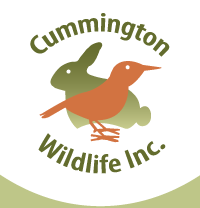
Sometimes it is difficult to determine whether an animal is truly orphaned, injured, or ill. Some animals mimic these conditions as part of their natural history. For example, a mother deer (doe) leaves her fawns lying in the grass for periods of time while she grazes nearby, but out of sight. The fawn may look orphaned, but is following the command from the mother. As another example, some adult animals pretend to be injured to lure predators away from their nests. This is a way that they protect the defenseless young.
Here are some signs that an animal probably requires assistance:
- The animal appears thin, cold, and weak with a sunken belly. The eyes appear dull.
- The animal has flies circling and/or landing on it.
- There is an open wound (bleeding).
- The animal has been attacked by a cat. This animal requires care even if no wounds are visible due to lethal bacteria in a cat's mouth.
- The animal appears to have a fractured limb or wing. The leg or wing is drooping and appears different than the wing/limb on the opposite side.
- The mother is known to be dead and/or there are dead siblings in the area.
If you find an animal in the above condition, please contact a wildlife rehabilitator immediately and/or take the animal to a veterinarian. Veterinarians generally will not charge you for the visit. Tufts Wildlife Clinic in North Grafton is available seven days a week. Their telephone number is 508-839-7918. Please see the section on Emergency Care and Transport to provide immediate assistance to the animal.
If an animal does not appear to be in imminent risk, please leave the animal alone and call a wildlife rehabilitator for advice. The wildlife rehabilitator can help assess the situation and determine whether the animal requires assistance.
